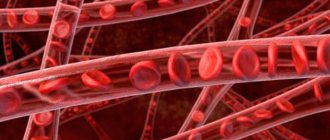Pheochromocytoma, what is it? Symptoms and treatment
Pheochromocytoma is a benign or malignant tumor that consists of chromaffin cells that produce catecholamines. In most cases, chromaffin cells are localized in the adrenal medulla. Therefore, most often they talk about pheochromocytoma of the adrenal gland.
But in 10% of cases of the disease they are formed in the paraganglia (organs of the neuroendocrine system), sympathetic ganglia and other organs. Cells that are located in the adrenal medulla produce norepinephrine and epinephrine. Those that are localized in other organs produce only norepinephrine.
Reasons for development
The exact reasons for the progression of pheochromocytoma have not yet been established. But scientists have several theories about this:
- Gorlin's syndrome and Sipple's syndrome. These are two hereditary diseases, a characteristic feature of which is the uncontrolled proliferation of cells of the glands of the endocrine system. In this case, not only the adrenal glands are affected, but also the thyroid gland, muscle and bone structures, etc.
- Hereditary predisposition. The study found that 10% of patients who were diagnosed with pathology had direct relatives with the same diagnosis. Therefore, scientists suggest that the development of the disease is directly related to the mutation of the gene responsible for the full functioning of the adrenal glands. As a result, brain cells begin to grow rapidly.
In most clinical situations, clinicians fail to identify the true cause of tumor formation.
How to treat
There are various methods of influencing a tumor, both malignant and non-threatening. However, in most cases, surgical intervention will be the most rational solution if pheochromocytoma has been detected. Removal will be especially important in the case of a tumor in the adrenal gland.
But exceptions are possible due to poor condition of the heart, blood vessels and high blood pressure. The participation of a surgeon in this condition is extremely undesirable or completely unacceptable. This has a different effect on a tumor such as pheochromocytoma. Treatment comes down to drug therapy, which usually takes several days.
The use of various drugs to neutralize the tumor implies that the patient will be in bed, and in a semi-sitting position. To normalize blood pressure, your doctor may prescribe alpha-blockers. More specifically, these are drugs such as Tropaphen and Phenoxybenzamine. If a patient experiences a hypertensive crisis, the administration of Phentolamine, Sodium Nitroprusside and other similar drugs will be relevant. It is also important that during preoperative therapy it is necessary to keep the patient from dehydration.
The role of catecholamines in the body
Adrenaline and norepinephrine are secreted in the human body constantly. Their concentration increases sharply after any kind of load. Catecholamines are rightly called “stress hormones.” Any active work, especially physical labor, contributes to the release of norepinephrine and adrenaline. A manifestation of such a reaction can be considered an increase in body temperature, increased heart rate, and redistribution of blood flow.
Adrenaline is considered the “fear” hormone. Adrenaline release occurs with strong excitement, fear, or strong physical activity. Adrenaline increases blood pressure and enhances the utilization of carbohydrates and fats. The physiological response to stress under the influence of adrenaline is to increase endurance.
Norepinephrine is the “fight” hormone. Under its influence, muscle strength increases significantly and an aggressive reaction occurs. Norepinephrine is produced during bleeding, physical activity, and stress. Excessive formation of catecholamines is possible during chronic stress.
Classification
Chromaffin cells are present not only in the adrenal cortex, but also in the sympathetic nerve ganglia, therefore pheochromocytoma can be located both in the adrenal gland and in other organs and tissues. Extra-adrenal localization is typical for hereditarily caused tumors.
There are benign and malignant pheochromocytomas. The latter occur in no more than 10% of cases. They are usually located outside the adrenal glands and produce predominantly dopamine. When making a diagnosis, a clinical classification is used, according to which the disease is divided into 3 groups.
With a characteristic clinical picture, they are divided into:
- Persistent - manifested by a stable increase in blood pressure.
- Paroxysmal - increased blood pressure and other symptoms caused by excess adrenaline in the blood appear only during an attack; there are no symptoms in the interictal period.
With uncharacteristic clinical symptoms of pheochromocytoma, which are similar to the manifestations of other diseases. They can manifest themselves in the form of cardiovascular, psychoneurovegetative, abdominal or endocrine metabolic syndrome.
Silent signs of pheochromocytoma without obvious manifestations of hypercatecholaminemia. They, in turn, are divided into:
- Hidden (metabolic) symptoms of pheochromocytoma appear only under very strong stress influences; with a normal rhythm of life, there is a slight increase in the level of metabolism and, in rare cases, emotional lability.
- Asymptomatic, in which clinical manifestations are completely absent throughout the patient’s life, and the tumor is not diagnosed; in this case, along with the hormone, the tumor cells produce an enzyme that converts it into an inactive metabolite, so symptoms do not appear.
Etiology and pathogenesis
The causes of the disease have not been definitively established. It is known that pheochromocytomas develop in two adrenal glands simultaneously in 10% of patients, in 10% of cases the tumor is located outside the adrenal glands and about 10% of them have signs of malignancy. Solitary pheochromocytomas often develop predominantly on the right and have a diameter of less than 10 cm.
About 5-10% of cases, pheochromocytoma is a familial pathology and is inherited as an autosomal dominant trait, either alone or as part of another pathology (multiple endocrine neoplasia), combined with hypoparathyroidism, medullary thyroid cancer, neurofibromatosis, and retinal-cerebellar hemagioblastomatosis. In familial syndromes, bilateral adrenal pheochromocytomas are more common. The genetic basis for inheritance of pheochromocytoma is point mutations and RET proto-oncogene in the long arm of autosome 10, encoding the structure of the tyrosine kinase receptor.
Extra-adrenal pheochromocytomas, as a rule, are significantly smaller in size (diameter less than 5 cm), and most of them are located in the paravertebral space of the abdominal cavity, about 1% of pheochromocytomas are localized in the chest cavity, 1% in the bladder and less than 1% in the neck. Pheochromocytoma may be localized in the pericardium or in the brain.
Pheochromocytomas may have signs of malignancy (pheochromoblastoma), which is difficult to determine from the histological picture. Malignancy is determined by local invasion of surrounding tissues or distant metastases. Pheochromoblastomas metastasize to the liver, bones, lungs and lymph nodes.
The pathogenesis of pheochromocytoma is realized through the effect of excess catecholamines on organs and systems, among which the cardiovascular and nervous systems occupy the main place. In addition, the qualitative composition of secreted catecholamines is important. The mechanism of catecholamine release from pheochromocytomas is the result of changes in blood flow to the tumor tissue or necrosis of the tumor tissue. Because pheochromocytomas are not innervated, catecholamine secretion does not occur as a result of nerve stimulation.
Most pheochromocytomas secrete norepinephrine and, to a lesser extent, epinephrine. Most extraadrenal pheochromocytomas secrete exclusively norepinephrine. Isolated production of adrenaline by pheochromocytomas is rare, mainly in MEN. The production of dopamine and homovanillic acid (HVA) increases significantly, mainly in malignant tumors.
Symptoms of adrenal pheochromocytoma
One of the main symptoms of pheochromocytoma is hypertension. A patient's high blood pressure may be episodic or constant. In the first case, attacks of hypertension are provoked by emotional experiences, increased physical activity or overeating.
Symptoms of pheochromocytoma during an attack of hypertension include:
- pale skin,
- sweating,
- discomfort in the chest and abdomen,
- throbbing headache,
- nausea,
- vomiting
- leg muscle cramps.
After the attack, the patient experiences a complete disappearance of all symptoms of pheochromocytoma, a sharp decrease in blood pressure up to a radically opposite state - hypotension.
Among the symptoms of complicated pheochromocytoma are signs of neuropsychic, cardiovascular, endocrine-metabolic, hematological and gastrointestinal disorders:
- psychoses,
- damage to the blood vessels of the kidneys and fundus,
- hyperglycemia (high blood glucose),
- hypogonadism (deficiency of androgen hormones in the body),
- neurasthenia,
- heart failure,
- increase in red blood cells or blood ESR,
- drooling, etc.
Diagnostics
During a general examination, patients are diagnosed with a rapid heartbeat, pallor of the skin of the face, neck and chest, and increased blood pressure. Orthostatic hypotension is also characteristic (when a person stands up, the pressure drops sharply).
One of the important diagnostic criteria is an increase in the content of catecholamines in the urine and blood of the subject. The level of chromogranin-A (universal transport protein), adrenocorticotropic hormone, calcitonin and trace elements - calcium and phosphorus - is also determined in the serum.
Differential diagnosis of pheochromocytoma should be carried out in people with complaints of:
- anxiety attacks,
- hyperventilation syndrome,
- hot flashes during menopause,
- increased need for caffeine,
- convulsions,
- short-term loss of consciousness.
Nonspecific changes in the electrocardiogram, as a rule, are detected only during a crisis.
With pheochromacytomas, there are often concomitant pathologies - cholelithiasis, neurofibromatosis, arterial circulation disorders in the extremities (Raynaud's syndrome) and hypercortisolism with the development of Itsenko-Cushing syndrome.
A significant proportion of subjects are found to have hypertension-related vascular damage to the retina (retinopathy). All patients with suspected pheochromocytoma should undergo additional examination by an ophthalmologist.
Features of attacks
Attacks tend to vary in frequency. They can make themselves felt 10 to 15 times a day or once a month. If a severe crisis with pheochromocytoma has begun, then it makes sense to talk about the real risk of stroke, retinal hemorrhage, development of renal failure, myocardial infarction, dissecting aortic aneurysm, pulmonary edema, etc. The most severe complication in this condition is catecholamine shock, manifested through uncontrollable hemodynamics. We are talking about a change in hypo- and hypertension, which is chaotic and cannot be corrected.
So, pheochromocytoma - what is it? When considering its manifestations, you need to pay attention to pregnant women, since in them a similar tumor can masquerade as eclampsia, preeclampsia and toxicosis. The consequence of such symptoms can be an unfavorable outcome of childbirth.
A stable form of the tumor is also possible, in which blood pressure will be constantly high. In this condition, changes in the kidneys, fundus and myocardium are often recorded. Sudden changes in mood, headache, increased fatigue and excitability are also possible. One in 10 patients develops diabetes mellitus.
There are other diseases that often accompany pheochromocytoma. We are talking about Raynaud's syndrome, cholelithiasis, Itsenko-Cushing syndrome, neurofibromatosis, etc. If a malignant tumor develops, abdominal pain appears, metastasis to distant organs and rapid weight loss occur.
Treatment of pheochromocytoma
During a crisis, the patient needs strict bed rest. The head of the bed should be raised. If it is not possible to normalize the pressure, then you need to call an ambulance. To establish a diagnosis and select treatment, patients are hospitalized in a hospital.
Drug treatment of pheochromocytoma:
| Drug category | Instructions | Mechanism of action |
| Alpha blockers | Tropaphen or Phentolamine. 1 ml of 1% solution is diluted in 10 ml of isotonic NaC solution. Administer intravenously every 5 minutes until the crisis subsides. | Blocks adrenergic receptors, making them insensitive to high levels of adrenaline. Reduces the negative impact of hormones on internal organs. |
| Calcium channel blockers | Nifedipine. Take 10 mg orally 3-4 times a day. | Blocks the entry of calcium into smooth muscle and myocardial cells and prevents vasospasm. Reduces the force of heart contractions and lowers blood pressure. |
| Beta blockers | Propranolol. To relieve a crisis, 1-2 mg is administered intravenously every 5-10 minutes. Orally 20 mg 3-4 times a day. If necessary, the dose is gradually increased to 320-480 mg per day. | Reduces sensitivity to adrenaline. Eliminates heart rhythm disturbances and lowers blood pressure. |
| Catecholamine synthesis inhibitor | Metyrosine. Taken orally. The initial dose is 250 mg 4 times a day. Later it is increased to 500-2000 mg per day. | Suppresses the production of adrenaline and norepinephrine. Reduces the manifestations of the disease by 80%. |





